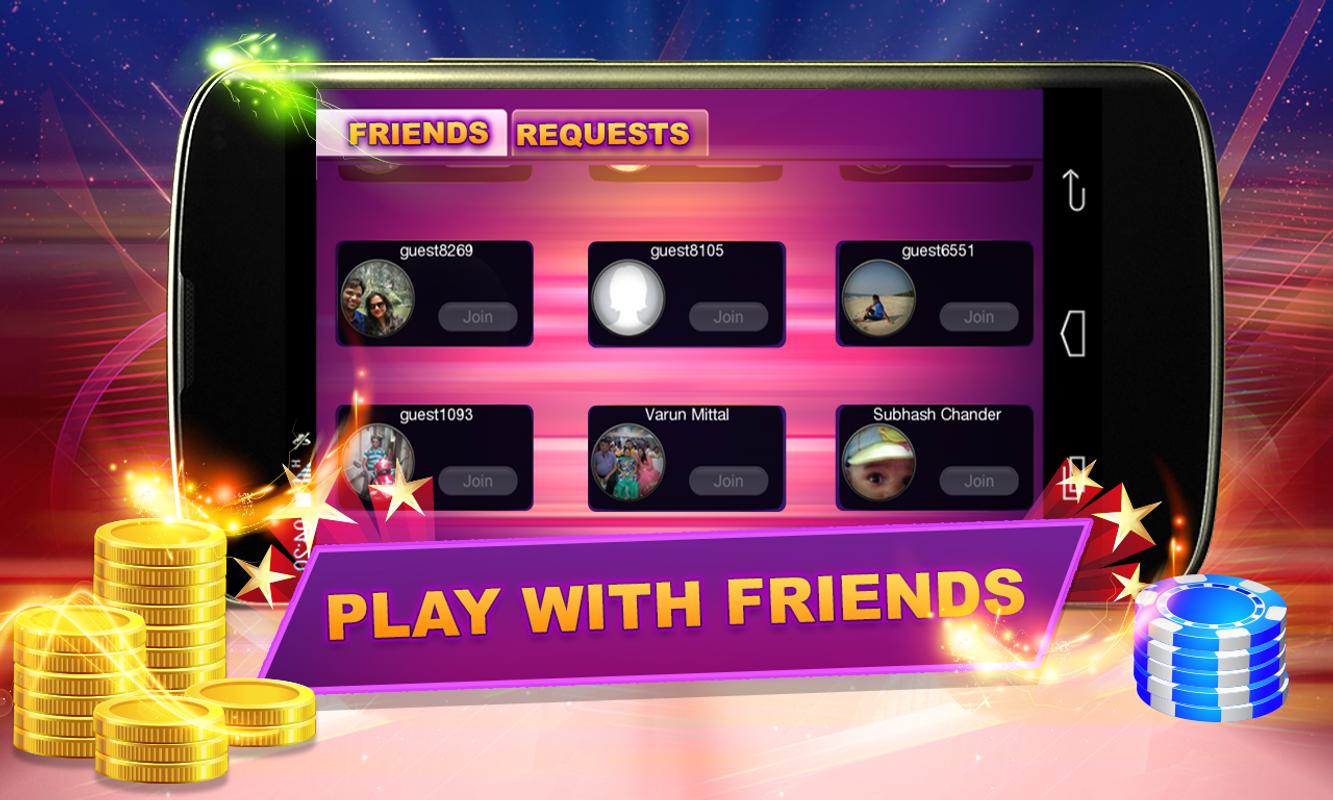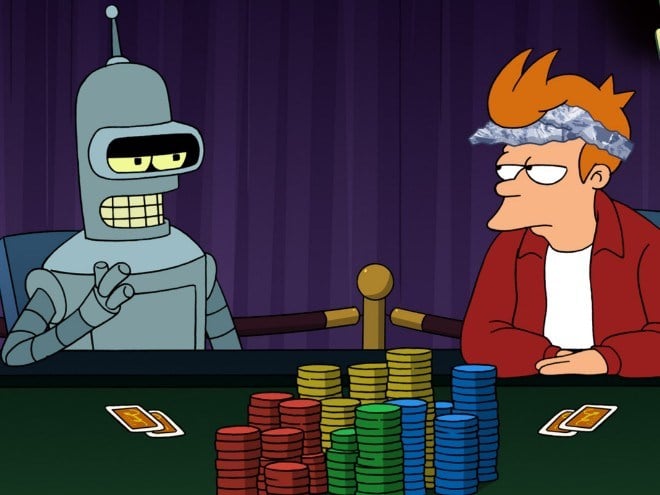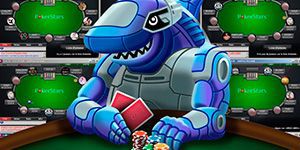Poker Bots
The owner of holdem-poker-bot.com does not sell or support any product; We are just an affiliate linking to a product that is for sale elsewhere. We may earn a commission if you purchase the product after following the link. Online poker may not be legal where you live. Poker bots may not be allowed at the poker rooms that they work at.
- Software based on neural networks and machine learning. Allows you to play poker automatically and make money. Our poker bot independently interacts with the poker room without the help of a human operator. You just need to register accounts, set up a game schedule and regularly replenish and withdraw your deposit.
- Playing poker using bots is cheating. BTW, you must understand that if the business has profit, it cannot be easily forbidden. Using 'friendly' bots in poker rooms is a nature of poker boom supporting. Moreover, beating bots is not a problem for advanced players. BTW, there are a lot of newbies that cry about money lost in playing with 'bots'.
- Concern is growing that sophisticated poker 'bots' - software capable of playing the card game - are being used against unsuspecting players on Internet poker sites. MSNBC.com's Mike Brunker.
/cdn.vox-cdn.com/uploads/chorus_asset/file/13327755/chip_2_final.jpg)

This is the first part of Building a Poker Bot series where I describe my experience developing bot softwarefor online poker rooms. I’m building the bot with .NET framework and F# language which makes the task relativelyeasy and very enjoyable.
Screen recognition
For a human, the very first step to the ability to play poker is to understand the cards, what a hand is andwhat the value of your hand is. E.g. in Texas Holdem each player gets 2 hole cards which form a hand. Atthe showdown the player with the best hand wins.
Poker bots are no different, they also need to be taught the notion of cards and hands. A bot should “watch”the table and see which cards he is dealt with. There are several ways to achieve that but I go for a techniquecalled screen recognition, i.e. the bot makes a screenshot of a table and then reads the pixels to understandwhat’s going on. Very similar to what people do.
Image recognition in general is a tough task. Human beings are very good at interpreting vague images andrecognizing familiar objects. It’s much more difficult for computers. General image recognition (think showinga photo to your computer and asking whether there is an animal there) is very tough; corporations like Googleand Microsoft are spending numerous man-years and employ techniques like machine learning and neural networks.
Fortunately, poker table recognition is much easier. The images to be recognized are machine-generated, sothe same things are rendered more or less the same way all the time. It makes sense to keep the poker tablesize fixed to some predefined value which makes recognition task fairly easy.
Card recognition steps
There are 13 card faces (from Deuce to Ace) and 4 suits. All of them are just fixed-size images which we need to be able tomatch with. So we start with a screenshot of a poker table:
The table size is fixed, so are the left and the top pixel positions of hole cards. So, our first step is to extractthe small images of cards out of the big screenshot:
Now, we can take the recognition of card faces and suits separately. In our sample layout, suits are color coded.This is very friendly to humans and super simple for the bot. We pick the suit based on the color (ignoringthe white pixels):
This leaves us with the task of choosing between 13 card faces. The color information is not importanthere, we can make the image grey-scale. Moreover, we can reduce the color information to the single bit perpixel - call it white or black:
Now this mask is very simple, and we can compare it with 13 predefined masks for 13 cards pixel by pixel.The one with the biggest amount of matches wins.
Suit recognition
Let’s put some code at the table. We start with suit recognition. getSuit function has typeColor -> string option and converts the color of a pixel into the suit name, if possible. Hearts (“h”)are red, Diamonds (“d”) are blue, Clubs (“c”) are green and Spades (“s”) are black:
This function is used by getCardSuit function of type (int -> int -> Color) -> int -> int -> string.Its first argument is a function which returns the color of a pixel based on (x, y)relative coordinates (starting with 0). The next two arguments are width and height of the cards. Result isthe same suit name that we described above. The function loops through all the pixels, gets a suit perpixel and then returns the suit which is the most popular among them. Alternatively, we could just returnthe first suit found, but my implementation looks more resilient:
Producing the black & white pattern
getCardPattern accepts the same parameters as getSuits but returns seq<BW> instead. This isa sequence of black or white pixels with a helper union type:
The function body enumerates the pixels and return black or white result as a flat sequence:
Card face recognition
Having a black and white pattern, we can compare it with the predefined patterns and pick themost similar one. A pattern is defined with a helper type
Pattern is a sequence which is equivalent to the sequence we got on the previous step.Card is a string of hand face value 2, 3, 4 .. A. getCardFace has the typeCardPattern[] -> seq<BW> -> string, it accepts an array of known patterns and a patternof the card to be recognized. It compares patterns pixel by pixel and returns the cardwhich has the biggest amount of matches:
Getting the known patterns
So how do we create an array of known patterns? It’s tedious to do manually, sowe use a bit of code generation.Basically we just take several screenshots of poker tables and feed them to the followinghelper function:

The function creates a string which can be copy-pasted into F# array of BW.
Putting it all together
Here is the facade function that will be called from the outside:
The calling code looks like this:
leftX, rightX, top, width and height are well-known parameters of cards locations within a screenshot,which are hard coded for a given table size.
Conclusion

The full code for card recognition can be found in my github repo. It’s just 75 lines of code which ismuch less that one could imagine for a task of image recognition. Similar code could be used to recognize otherfixed objects at poker table: dealer button location, action buttons, checkboxes etc. In the next part of thisseries I will show how to recognize non-fixed parts: text and numbers.
Proceed to Part 2 of Building a Poker Bot: String and Number Recognition.
Unregistered users can run the bot for free in any room we support, but it will terminate in 10 minutes after connection to the table. Then you can restart it again
Poker Bots Online
Room Settings
Poker Bots Forum
Configure your poker-room according to our guides before using Warbot
Poker-botting guide
Learn how to run Warbot profitably, with all its potential
Documentation
All technical topics covered: installation, configuration, managing profiles, scripting, and more..